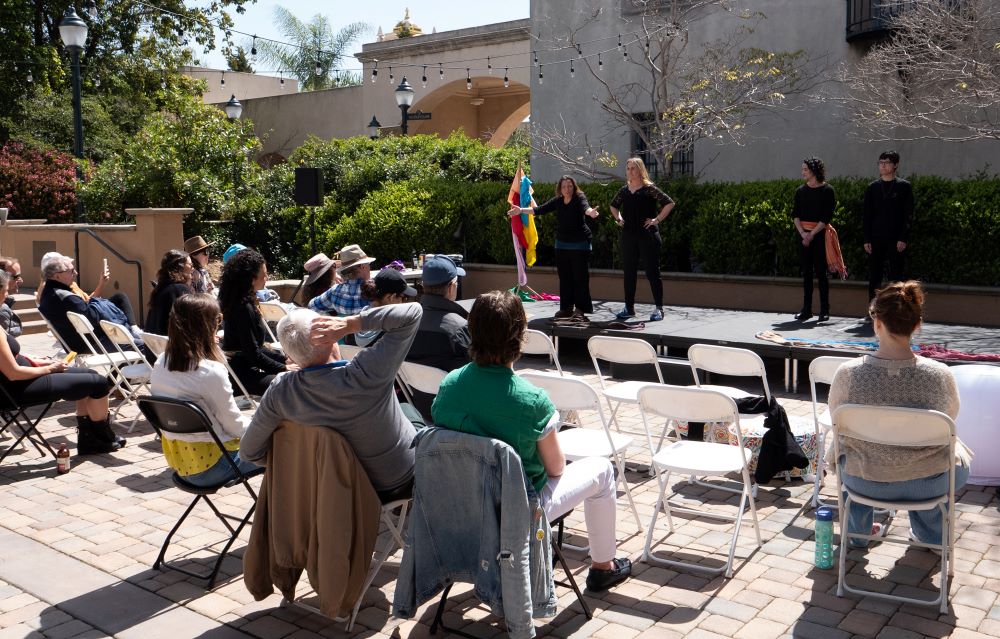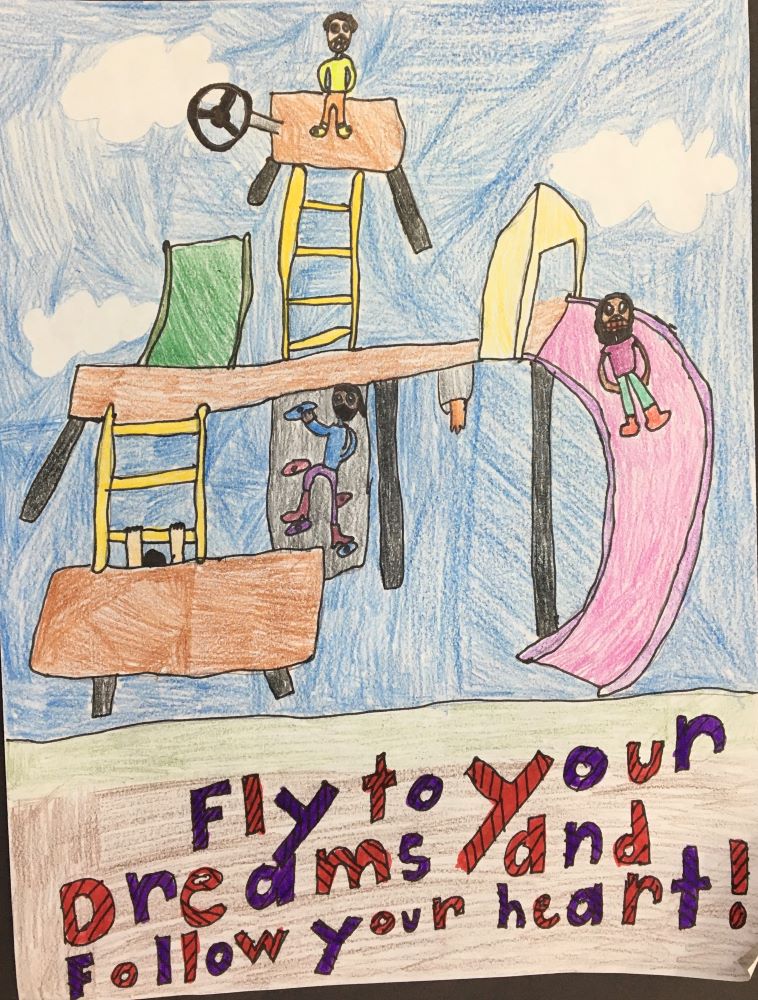Inclusive Engagement Techniques and Approaches
Arts-based Engagement

What is it?
Arts-based engagement involves using artistic methods and activities to engage the public in projects. These methods could include community-based art, applied theatre techniques, artist showcases, storytelling and other creative formats.
When to use it
Arts-based engagement is particularly effective in helping to access creative solutions for complex issues, cultivate community relationships and connect with intergenerational groups. These methods can help gather input on community values, provide opportunity for community expression and create a sense of ownership and pride among community members.
How to do it
Before
- Consider how effective the activity will be at reaching the intended audience and achieving engagement goals.
- Choose an activity. Conducting informal interviews with community members can help inform what type of activity they would want to participate in. Examples include:
- Community-based art such as murals, poetry, photography, drawing, story or comic books and art exhibitions featuring community submissions.
- Applied theater such as role play, interview theater or playback theater.
- Artist showcases in which professional artists (visual artists, musicians, dancers, spoken word artists etc.) respond to the project topic, allowing the public a chance to respond and reflect.
- Immersive art installations that engage a variety of senses so that the public can gain an experiential understanding of the project.
- Determine whether staff can facilitate the activity or consider working with local artists or arts-focused community-based organizations for facilitation and programming support. Collaborate with these partners to explore how different art forms can be used to engage the public.
- Create a logistics plan for the activity as needed.
- Provide adequate lead time for production of any elements for the activity such as printed materials, props or art supplies. Verify proper licensing and attribution for any existing artwork being used.
- Conduct outreach to invite and encourage participation, such as using email notifications, flyers or social media. Highlight the creative and interactive nature of the event.
- In addition to standard outreach channels, directly contact people and organizations that may be particularly interested in the topic.
During
- Facilitate the event according to the logistics plan to guide the activity, encourage participation and interpret any results.
- Reinforce the idea that there is no right or wrong approach to art, as it is a personal experience. Prioritize authenticity and creativity.
- Document artistic outputs and discussions through photographs, videos and/or notes.
After
- Compile, digitize and review collected input to inform project decision-making.
- Consider sharing the outcomes of the engagement through briefings, social media and/or the project webpage.
- Consider how the art might be sustained or grow over time. A mural could last for years, and a performance or temporary exhibit could inspire future initiatives or partnerships.
Resource considerations
![]()
Cost: Minimal to Moderate
Costs can vary from minimal to several thousand dollars depending on the scale and complexity of the artistic activities, including materials, artist fees and venue rentals.
![]()
Time: Moderate to High
Planning and executing arts-based engagement can require a month or more.
![]()
Capacity: Moderate to High
A team is typically needed to support arts-based engagement, including facilitator(s) and logistical support.

Other considerations
- Consider the audiovisual needs (projector, microphones, screen, etc.) of the arts-based activity.
How to make it more inclusive
- Consider potential artists/art forms that are unique, representative and familiar to the engaged community. This can encourage participation, build trust and communicate inclusive intention.
- Identify any language access needs in advance and consider providing participation support.
- Choose venues that are fully accessible, including parking, entrances and restrooms. Choose venues near transit and that have adequate parking.
Inclusive Engagement Techniques and Approaches
- Introduction
- Appreciative Inquiry
- Arts-based Engagement
- Briefings
- Comment Forms
- Community Cafés
- Community Mapping
- Community Office Hours
- Email Notifications
- Engagement through Service
- Fact Sheets
- Flyers
- Focus Groups
- Game-based Approaches
- Hotlines
- Information Kiosks
- Interviews
- Meeting in a Box
- Mobile Engagement
- News Releases
- Newsletters
- Open Houses
- Participation Support
- Pop-Up Events
- Project Models
- Project-specific Groups
- Public Meetings
- Public Service Announcements (PSAs)
- Social Media
- Surveys and Polls
- Tours and Field Trips
- TV/Radio/Podcast Interviews
- Vision Walls
- Web-Based/Hybrid Meetings
- Webpages
- Workshops


 Inclusive Public Engagement Guide
Inclusive Public Engagement Guide